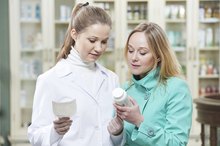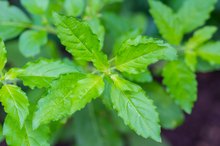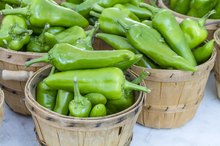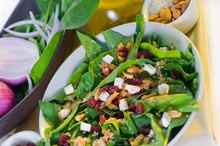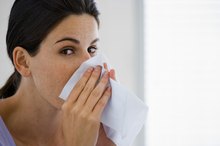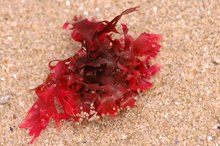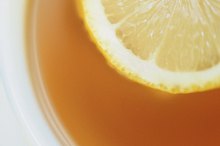Foods High in Vitamin P
Vitamin P is a rarely used collective term for a plant classification known as flavonoids, or bioflavonoids -- the terms more commonly used. Flavonoids are pigments that produce yellow or red-blue coloring in plants. Along with color, they provide plants with protection from attacks from insects, fungi and microbes. They're also linked to cancer and cardiovascular disease prevention. While flavonoids are abundant in many plant foods, intensely colored foods tend to contain higher amounts.
Brightly Colored Fruits
Many brightly colored fruits are loaded with flavonoids. Red cherries are high in quercetin -- part of the flavonol category of flavonoids. Citrus fruits also pack a powerful flavonoid punch. Grapefruit is high in the flavonoid naringenin, and lemons, oranges and limes contain high amounts of the flavonoids eriodictyol and hesperetin. Fresh blackberries and blueberries contain high amounts of the flavonoids catechin and epicatechin. Black and red grapes are a good source of the flavonoids quercetin and catechin.
Vivid Vegetables
Is Ruby Red Grapefruit Juice Good for You?
Learn More
Most fresh vegetables are a good source of flavonoids, especially those that are intensely colored. Ripe red tomatoes and green peppers contain the flavonoids quercetin and luteolin. Red leaf lettuce provides the flavonoid quercetin. Fresh kale and spinach are high in the flavonoid kaempferol. Red onions contain high amounts of the flavonols quercetin and isorhamnetin as well as smaller amounts of flavonols kaempferol and myricetin.
Healthful Herbs and Spices
Adding herbs and spices to your meals is an excellent way to consume more vitamin P. Coriander is high in the flavonol quercetin. Fresh oregano, sage and thyme contain the flavonol quercetin and the flavones apigenin and luteolin. Parsley is very rich in the flavone apigenin and also contains luteolin, kaempferol, quercetin and myricetin. Fresh garden cress contains the flavonol kaempferol, and fresh dill provides good amounts of both kaempferol and the flavonol isorhamnetin.
Beneficial Beverages
Quercetin Dihydrate Side Effects
Learn More
Several beverages provide valuable flavonoids. Juices made from fresh fruits and berries are good sources of flavonoids, such as quercitin, hesperitin, naringenin, eriodictyol and catechin. Red wine is rich in catechins and contains the powerful grape flavonols quercetin as well as the flavone luteolin. Teas -- both green and black varieties -- contain the flavonoids catechin, kaempferol and quercetin. And for hot chocolate lovers: Dark chocolate cocoa provides catechins.
Related Articles
References
Writer Bio
Karen Curinga has been writing published articles since 2003 and is the author of multiple books. Her articles have appeared in "UTHeath," "Catalyst" and more. Curinga is a freelance writer and certified coach/consultant who has worked with hundreds of clients. She received a Bachelor of Science in psychology.

